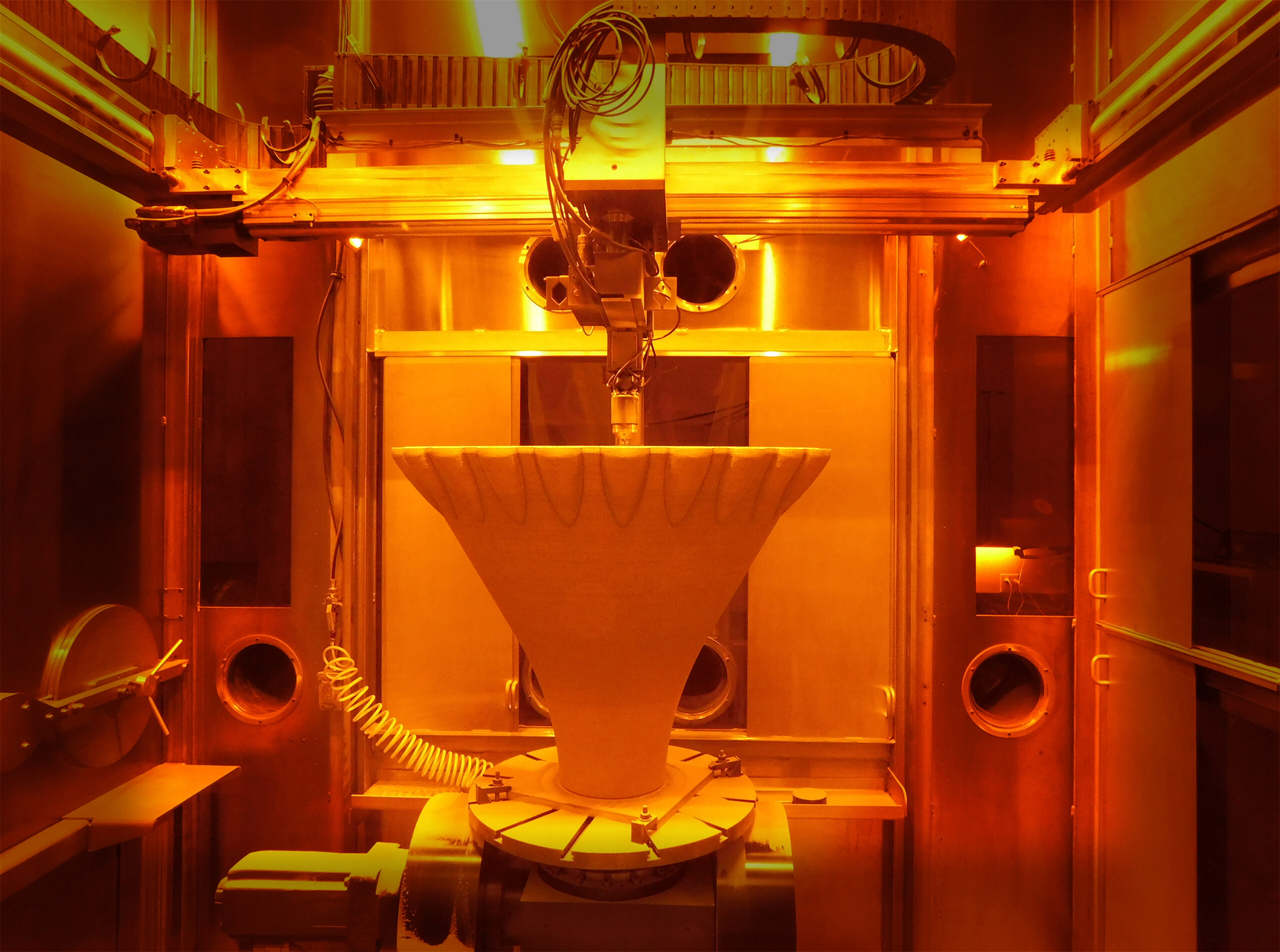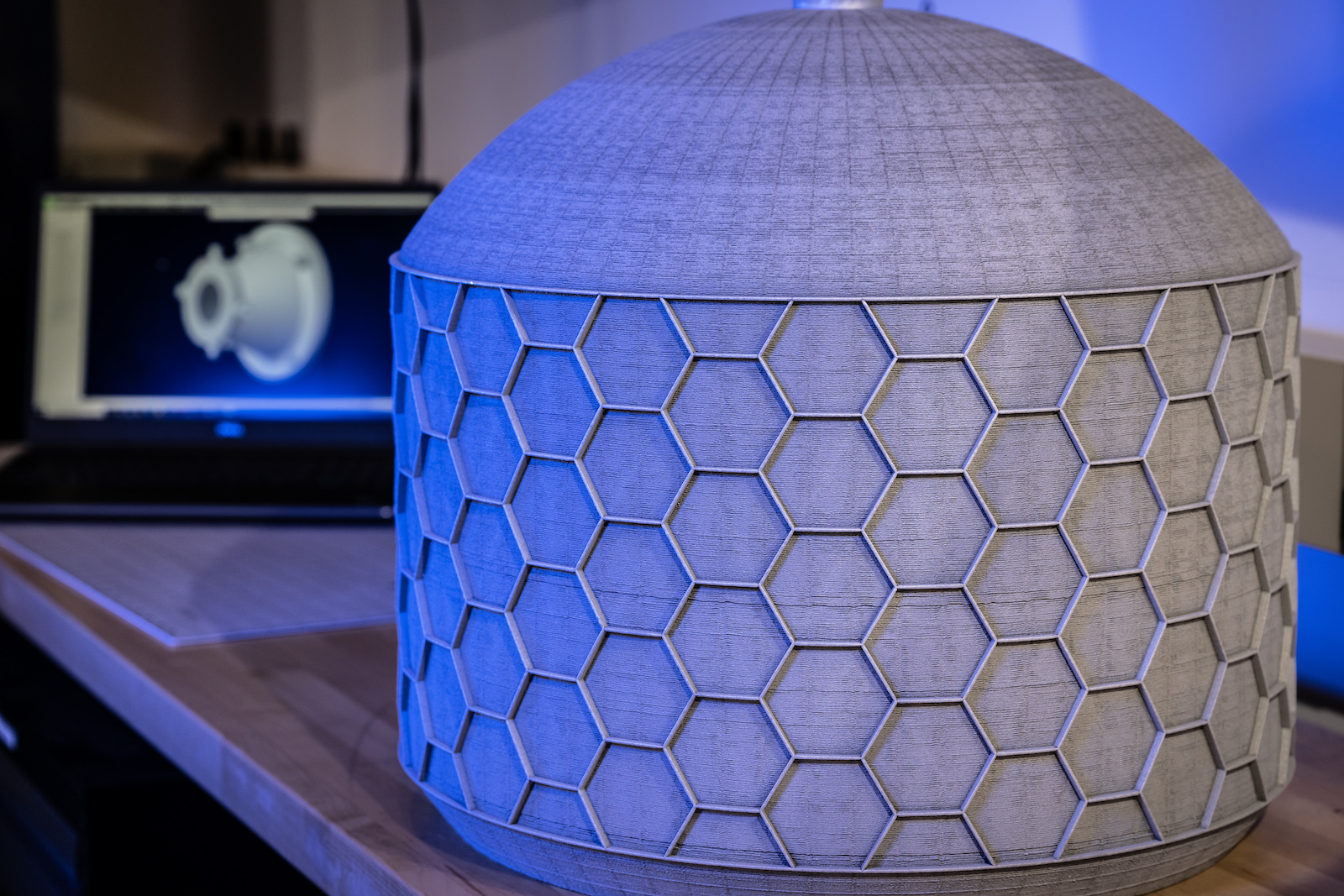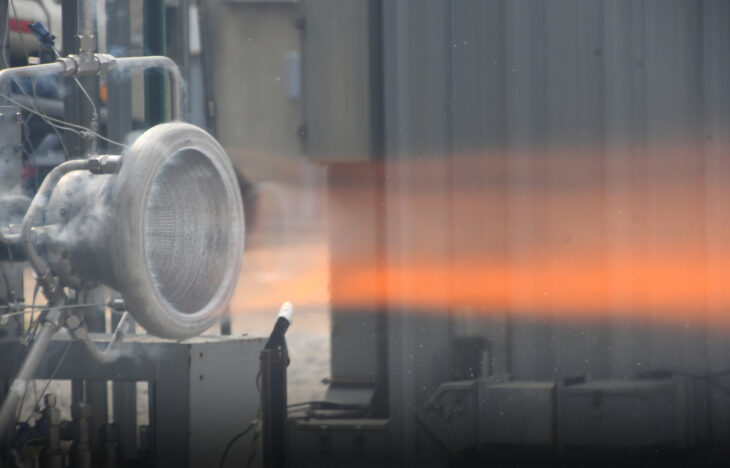NASA recently built and tested an additively manufactured rocket engine nozzle made of aluminum as part of the Reactive Additive Manufacturing for the Fourth Industrial Revolution (RAMFIRE) project. By implementing 3D printing, the innovative design is able to be comprised of a single piece, which reduces manufacturing time and makes the nozzle lighter than conventional nozzles — thus setting the course for deep space flights that can carry heavier payloads.
NASA’s Moon to Mars plan involves several key objectives, including science, transportation and habitation, lunar and Martian infrastructure, and operations — all of which provide the support for deep space human exploration. Meeting these objectives requires NASA to send more cargo to deep space destinations. The development of a novel new aluminum alloy and the use of 3D printing could play an instrumental role in this by enabling the manufacture of lightweight rocket components that can withstand high structural loads.
“Mass is critical for NASA’s future deep space missions,” said John Vickers, principal technologist for STMD advanced manufacturing. “Projects like this mature additive manufacturing along with advanced materials, and will help evolve new propulsion systems, in-space manufacturing, and infrastructure needed for NASA’s ambitious missions to the Moon, Mars, and beyond.”
Technology Development
The RAMFIRE project was conducted as part of the NASA’s Announcement of Collaborative Opportunity (ACO) program and was funded by the agency’s Space Technology Mission Directorate (STMD). The project focuses on advancing lightweight, additively manufactured aluminum rocket nozzles, which are designed with small internal channels that keep the nozzle cool enough to prevent melting.
With conventional manufacturing methods, a nozzle may require as many as a thousand individually joined parts. The RAMFIRE nozzle is additively manufactured using the laser powder directed energy deposition (LP-DED) process. This process creates a melt pool using a laser and blows powder into the melt pool to deposit material layer by layer. In this way the nozzle can be produced as a single piece, thus requiring far fewer bonds and significantly reduced manufacturing time.
Aluminum was selected for this project, because compared to other metals, it provides a lower density and allows for high-strength, lightweight components. However, due to its low tolerance to extreme heat and its tendency to crack during welding, aluminum is not typically used for additive manufacturing of rocket engine parts. Therefore, engineers from NASA’s Marshall Space Flight Center in Huntsville, Alabama, partnered with Elementum 3D in Erie, Colorado, to create a weldable aluminum alloy that is heat resistant enough for use on rocket engines.
NASA and Elementum 3D first developed the novel aluminum alloy variant known as A6061-RAM2 to build the nozzle. Another commercial partner, RPM Innovations (RPMI) in Rapid City, South Dakota, used the newly invented aluminum and specialized powder to build the RAMFIRE nozzles using their LP-DED process.
“Industry partnerships with specialty manufacturing vendors aid in advancing the supply base and help make additive manufacturing more accessible for NASA missions and the broader commercial and aerospace industry,” said Paul Gradl, RAMFIRE principal investigator at NASA Marshall. “We’ve reduced the steps involved in the manufacturing process, allowing us to make large-scale engine components as a single build in a matter of days.”
Earlier this summer, two RAMFIRE nozzles at Marshall’s East Test Area completed multiple hot-fire tests using liquid oxygen and liquid hydrogen, as well as liquid oxygen and liquid methane fuel configurations. A hot-fire test can be seen in the following video:
With pressure chambers in excess of 825 lbs per square inch (psi) — more than anticipated testing pressures — the nozzles successfully accumulated 22 starts and 579 seconds, or nearly 10 minutes, of run time. In addition to experiencing high pressures during the test, the aluminum nozzle experiences huge temperature gradients. As hot gasses approach 6,000°F and undergo combustion, icicles are forming on the outside of the engine nozzle.
Based on these results, the nozzles demonstrate their ability to operate in the most demanding deep-space environments. “This test series marks a significant milestone for the nozzle,” said Gradl. “After putting the nozzle through the paces of a demanding hot-fire test series, we’ve demonstrated the nozzle can survive the thermal, structural, and pressure loads for a lunar lander scale engine.”
NASA engineers will use the nozzle as a proof of concept to inform future component designs. In addition to successfully building and testing the rocket engine nozzles, the project has used the RAMFIRE aluminum material and additive manufacturing process to construct other advanced large components for demonstration purposes. This includes a 36-inch diameter aerospike nozzle with complex integral coolant channels and a vacuum-jacketed tank for cryogenic fluid applications.
NASA and industry partners are working to share the data and process with commercial stakeholders and academia. Various aerospace companies are evaluating the novel alloy and the LP-DED additive manufacturing process and are looking for ways it can be used to make components for satellites and other applications.



